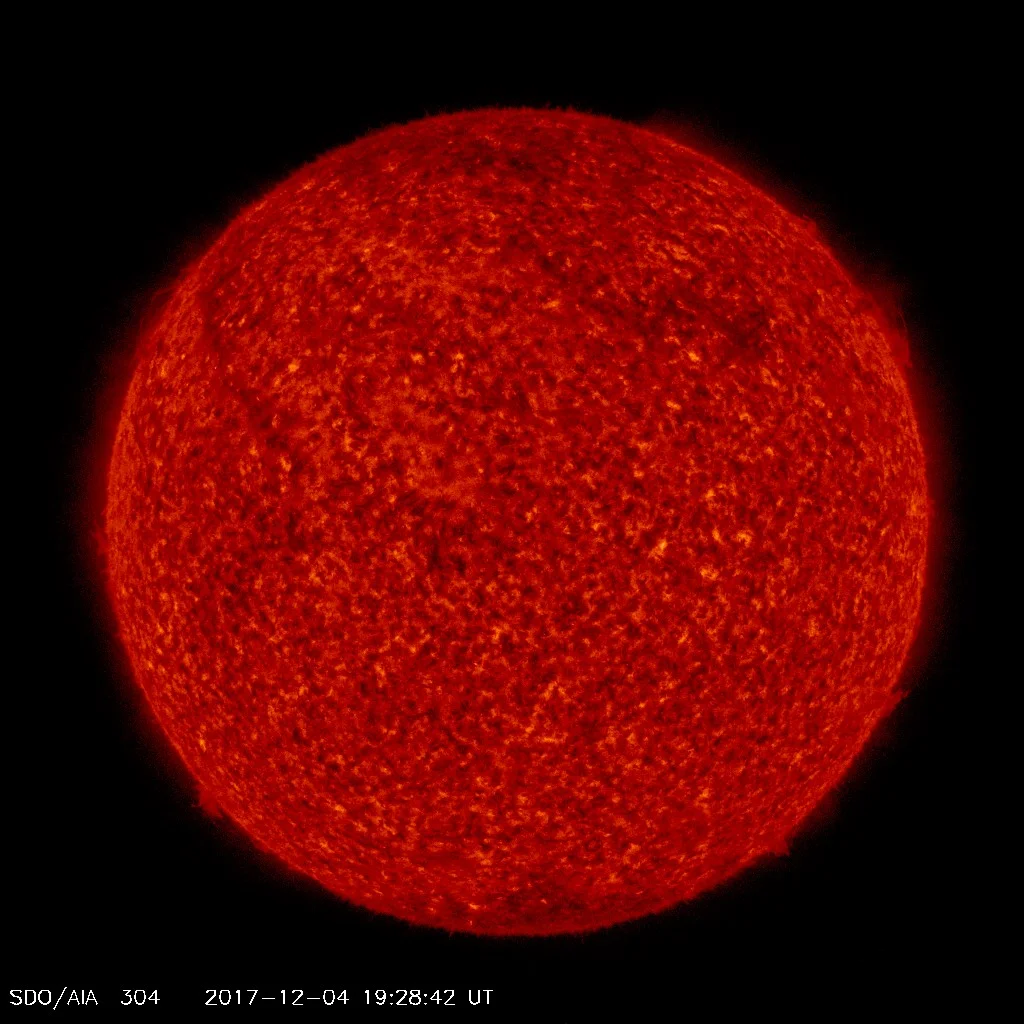3:00 PM | *Historically quiet sun headed towards next solar minimum*
Paul Dorian
The latest image of the sun and for the 90th day in 2017, it is spotless. Image courtesy NASA, spaceweather.com
Overview
Solar cycle 24 has turned out to be historically weak with the lowest number of sunspots since cycle 14 peaked more than a century ago in 1906 and by some measures, it is the third weakest since regular observations began around 1755. This historically weak solar cycle continues a weakening trend in solar irradiance output since solar cycle 21 peaked around 1980 and the sun is fast-approaching the next solar minimum. The last solar minimum lasted from 2008 to 2009 and the sun was as quiet during that time as it has been since 1978. The sun is likely to enter the next solar minimum phase within three years or so. The sun has been spotless for 26% of the time in 2017 (90 days) and the blank look should increase in frequency over the next couple of years leading into the next solar minimum.
The importance of the sun
The sun is the main driver of all weather and climate on Earth and without it, life on Earth would not exist. The sun’s output energy is not constant, however, as it varies over the course of about 11 years which is the average time period of a solar cycle (a.k.a., sunspot cycle), typically taking about 5 1/2 years to move from the quieter period of solar minimum to the more turbulent solar maximum phase. Over the course of one solar cycle, the sun’s emitted energy varies on average by about 0.1 percent. That may not sound like a lot, but the sun emits a large amount of energy – 1,361 watts per square meter - and fluctuations of just a tenth of a percent can affect Earth.
The accumulated sunspot anomaly from the mean of the previous 23 cycles – 107 months into the cycle. Source
Third weakest solar cycle since 1755
Solar cycle 24 began in 2008 which puts us about nine years into the current cycle. An analysis of the current solar cycle (#24) finds it to be the third weakest since 1755 in terms of accumulated sunspot number anomalies from the mean value at this stage of the solar cycle. The mean value is noted at zero and solar cycle 24 is running 4048 spots less than the mean at the time of the study. In fact, the researchers claim that there have been only two weaker cycles since systematic observations began in 1755 – solar cycle 5 which began in April 1798 and solar cycle 6 which ended in May 1823 - both of these occurred during the extended period of low solar activity known as the “Dalton Minimum”. The seven cycles preceded by solar cycle 24 actually had more sunspots than the mean.
The sun’s total solar irradiance as measured since 1978 by nine previous satellites has been in a downward trend since solar cycle 21 peaked around 1980. A new instrument known as the Total and Spectral solar Irradiance Sensor (TSIS-1) will continue these measurements going forward. Credit NASA
Downward trend in total solar irradiance since 1980
For nearly 40 years, NASA satellites have been measuring the total solar irradiance output from the sun which powers the Earth. The composite (above) shows total solar irradiance since 1978 as observed from nine previous satellites and there has been a downward trend in this extended time period. NASA is actually set to launch to the International Space Station (ISS) a new instrument known as the Total and Spectral solar Irradiance Sensor (TSIS-1) which will continue to monitor the all-important sun’s energy input into the Earth’s system. This instrument is to be launched in December and will be deployed in time to measure total solar irradiance during the fast-approaching solar minimum.
TSIS-1 will study the total amount of solar radiation emitted by the sun using the Total Irradiance Monitor, one of two sensors on the instrument. The second sensor, called the Spectral Irradiance Monitor, will measure how the sun’s energy is distributed over the ultraviolet, visible and infrared regions of light. TSIS-1 spectral irradiance measurements of the sun’s ultraviolet radiation are critical to understanding the ozone layer — Earth’s natural sunscreen that protects life from harmful radiation.
Meteorologist Paul Dorian
Vencore, Inc.
vencoreweather.com



